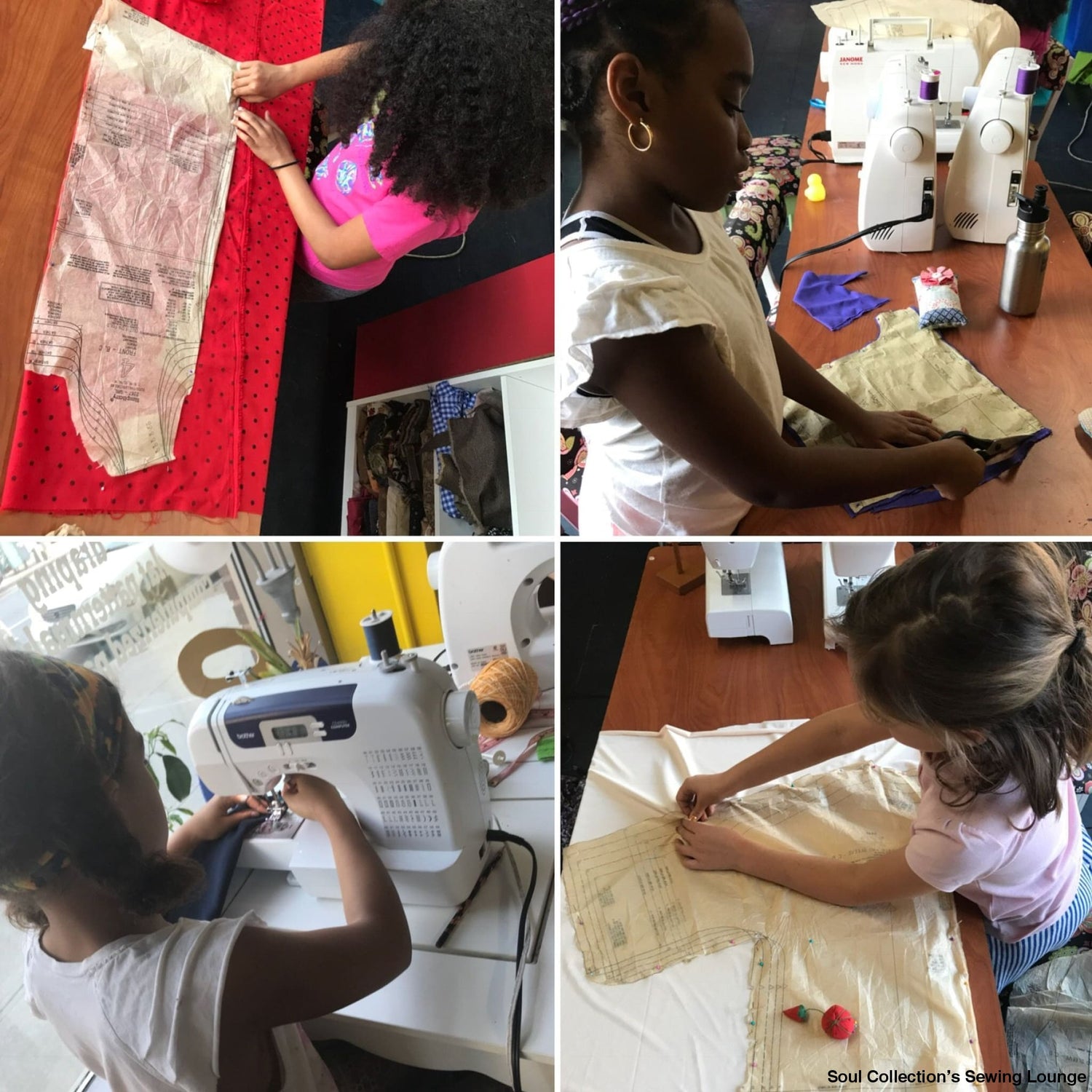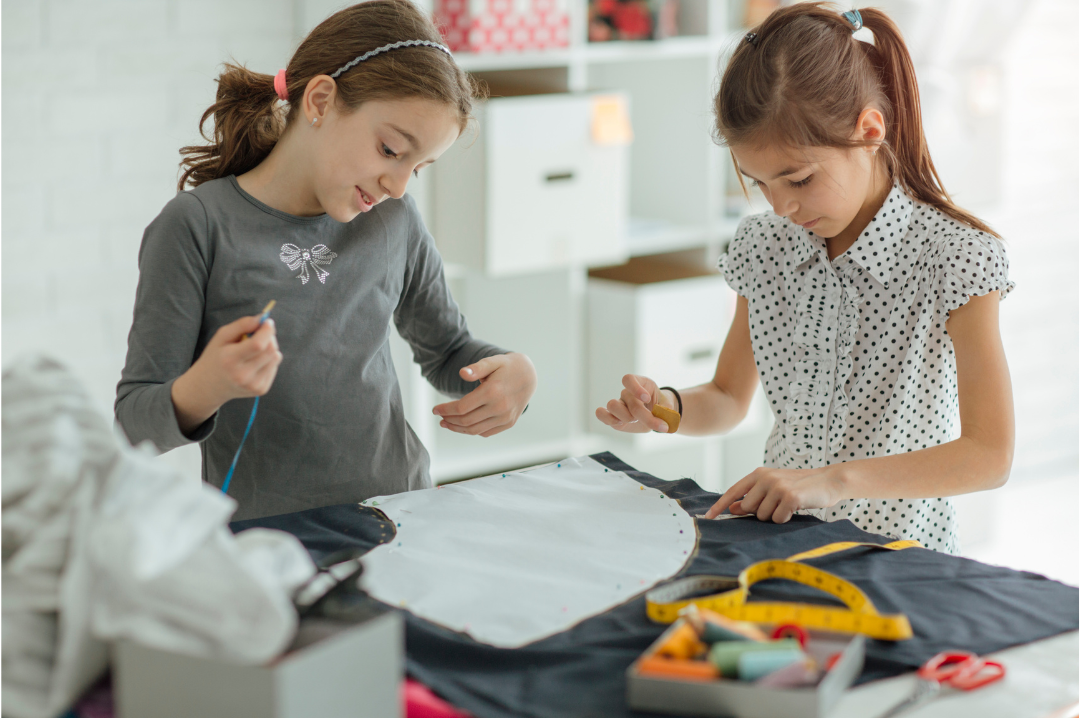Fun and Simple Sewing Lessons for Kids to Have Fun and Learn From
Fun and Simple Sewing Lessons for Kids to Have Fun and Learn From
Blog Article
Unlock New Skills: Why You Must Think About an Embroidery Lesson for Children
As youngsters produce tangible results from their tough job, a sense of success takes place, leading to an extensive shift in their positive self-image. Discover why these lessons can be a transformative experience for your youngster.
The Art of Sewing: A Summary
Sewing, a timeless art, incorporates an array of methods that have been given with generations. Its origins date back to the Paleolithic era when early people utilized bones and pet sinews to sign up with pieces of fur and hide. Over time, this basic technique developed into an advanced craft, incorporating energy and appearances.
From hand-sewing to machine stitching, the treatments vary throughout societies and contexts. Some create detailed needlework, others fashion tough garments, while particular practices serve ritualistic purposes. Standard quilting in North America, Sashiko in Japan, or Kantha in India exemplify the diversity of this craft.
Today, despite technological advancements, the significance of embroidery dominates. It's a practical skill, a healing activity, an imaginative electrical outlet, or perhaps a resources for many. Presenting kids to sewing can be a valuable investment, fostering creativity, enhancing hand-eye sychronisation, and passing on a sense of success. The following section will look into the advantages of stitching lessons for young learners.
Key Advantages of Embroidery Lessons for Children
Countless advantages go along with the introduction of stitching lessons to young learners. Primary among these is imagination enhancement. Embroidery advertises kids's ability to bring concepts to life, therefore fostering their imaginative and innovative side. It additionally nurtures analytical skills. When a stitch goes incorrect or a pattern requires adjustment, kids should devise remedies, consequently honing their crucial reasoning.
Sewing lessons additionally imbue perseverance and perseverance. Stitching is a thorough craft, needing ample time and accuracy. This can educate youngsters the worth of patience, and the value of persisting with a task to achieve a satisfactory outcome. Furthermore, it boosts hand-eye sychronisation. The act of threading a needle or following a pattern enhances great electric motor skills.
Finally, sewing can be a self-confidence booster - sewing lessons for kids. Every completed project brings a sense of achievement, improving children's self-confidence. Stitching lessons can bring a host of benefits, making it a beneficial enhancement to children' skill-building tasks.
Just How Stitching Enhances Child Development
With a myriad of practical and cognitive benefits, the effect of sewing on children's growth is extensive. This hands-on task encourages the development of great electric motor abilities as kids browse through the material with a needle, cultivating precision and mastery. The focus needed for embroidery additionally improves emphasis and attention span, important top qualities for scholastic success.
Beyond physical skills, stitching aids cognitive advancement. It entails recognizing instructions, planning, and analytical - all of which promote the brain's exec features. Additionally, it presents children to basic mathematical ideas like forms, dimensions, and fractions in a practical, interesting manner.
Last but not least, stitching has emotional advantages. The process of click for info developing something concrete boosts a child's self-esteem and feeling of achievement. The patience and perseverance required to complete a sewing project likewise show useful life lessons concerning tough job and the pleasure of seeing a task with to completion.
Age-Appropriate Embroidery Projects for Youngsters
Having understood the myriad advantages of stitching for kid development, it is similarly important to think about appropriate sewing jobs that align with a kid's age and skill level. For young beginners, ages 5-7, easy tasks like threading beads onto a string can fine-tune hand-eye coordination. As they get older, ages 8-10, they can advance to stitching buttons or crafting little fabric things such as pillow cases.

Choosing the Right Stitching Lesson for Your Kid
Exactly how does one tackle choosing the right stitching lesson for their kid? It begins with comprehending the kid's rate of interest degree and skill collection. A basic sewing course covering easy stitches and security procedures would be suitable if the youngster is a full beginner. For those with a little experience, a training course that presents patterns or more complex jobs may be better.
Parents need to also think about the mentor technique. Does the youngster discover far better in a group setting or one-on-one? In addition, the instructor's certifications and experience are crucial. A patient and educated instructor can make all the difference in a kid's knowing experience.

Conclusion
Finally, click sewing lessons supply an improving experience that extends beyond creativity. They cultivate crucial life skills like analytical, perseverance, and mathematical principles. Age-appropriate sewing projects not just boost confidence yet likewise sustain overall youngster development. Therefore, taking into consideration a stitching lesson for your kid can indeed unlock a myriad discover this of brand-new skills and supply a distinct, beneficial understanding chance.
Having recognized the myriad benefits of sewing for kid growth, it is equally crucial to take into consideration suitable sewing jobs that align with a kid's age and ability level. sewing lessons for kids.Just how does one go about choosing the right sewing lesson for their youngster? If the kid discovers much better in a physical environment, regional sewing lessons could be an excellent choice. In verdict, these elements play a significant function in choosing the best embroidery lesson for a child
Age-appropriate sewing tasks not just increase confidence yet also sustain general child advancement.
Report this page